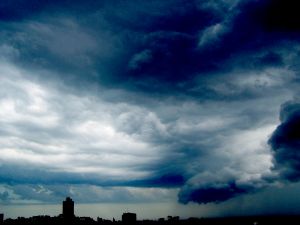Cluster 2 Poetry
Cluster 2: from Search for my tongue by Sujata Bhatt
Theme
The poem focuses on what can happen when two different cultures collide and the confusion this can cause. It is almost as though the poet feels she has lost not just her original culture but a part of herself. The tone of the poem is quite sad or even angry to begin with but as the poem progresses it becomes more happy, as she discovers she has not lost her mother tongue.
Structure
The poem has a very distinct and effective structure. At first it consists of English where the poet asks the reader what would happen “if you had two tongues in you mouth”. The poet then moves on to describe her dream in Gujarati with the phonetic translation underneath and finally the poet concludes in English which acts as a translation of the Gujarati. This structure could have been used by the poet to suggest she feels her original culture and language is trapped between the English culture she must now embrace.
Language
The poem is written in the first person with the poet ‘talking’ to the reader directly. This engages the reader and in turn makes the poem all the more effective. Throughout the poem Bhatt makes continued and effective use of imagery. She asks the reader:
I ask you, what would you do
if you had two tongues in your mouth,
This almost acts as a pun, with the obvious conclusion that she would choke. Here the poet is also making use of the two different meanings of the word “tongue”, the actual physical object in our mouths and the language we use to speak.
The poet moves on to explain that if you only use one ‘tongue’ the other would “rot and die in your mouth” which acts as another metaphor comparing her tongue to a flower. This almost suggests that the poet feels that losing your original culture and language is comparable to losing a part of you body. Comparing the tongue to a flower is revisited in the extended metaphor at the end of the poem:
it grows back, a stump of a shoot
grows longer, grows moist, grows strong veins,
Here we can see that the poet feels that she has not lost her culture and that every time she feels she has “it blossoms out of my mouth”. This has powerful effect on the audience and we can be happy with the knowledge that she has not lost her mother tongue.
Cluster 2: from Unrelated incidents by Tom Leonard
Theme
The poem focuses on the divide between class and how one social class may not always be fairly represented in the media.
Structure
The poem is written with very short lines to almost look like an autocue used on the news. This lures us into a false sense of security, at first thinking this is going to be a poem depicting a ‘normal’ newsreader; however when you actually read the poem the use of non-standard English seems slightly odd. This helps to challenge our preconceived ideas and in turn makes the poem all the more effective.
Language
The poem uses non-standard English, it is written phonetically and also includes some regional dialect for example “belt up”. The poet also includes very little in the way of conventional punctuation or grammar. Whilst this emphasise the main theme of the poem the extent it has been used makes the poem very difficult to understand and in turn may make the overall message in the poem less effective.
The most important idea dealt with in the poem is whether people would be less trusting of someone who speaks with a strong accent.:
scruff if
a toktaboot
thi trooth
lik wanna yoo
scruff yi
widny thingk
it wuz troo.
This is obviously unfair, however the use of a “BBC” accent may be used to ensure that the greatest number of people possible can understand them. This is obviously true with unrelated incidents given the difficulty in reading and understanding the poem. So overall whilst the poem challenges our ideas, the message Leonard is portraying may not be fully developed.
The tone in the poem is quite interesting, whilst there’s an element of humour; it also carries a much more serious message. Perhaps the poet wanted to use a humorous tone to try and carry the more serious message.
Cluster 2: Half-caste by John Agard
Theme
The poem explores the connotations that can be linked with the term “half-caste”, suggesting that the term almost implies that there is only half of something present regardless of whether that’s half an object or half a person.
Structure
The poem follows a non-standard structure split into four stanzas. Whilst the first three stanzas have a light-hearted tone, the tone changes dramatically in the last stanza when Agard explains to the audience that we must to respect him and his culture if we are ever going to learn.
Language
The poet uses non-standard English which reflects his culture and uses little punctuation other than a slash which could suggest that he feels divided. Agard also make consistent use of repetition particularly of the term “explain yourself”. This is directed at the audience, which helps to engage us and in turn makes us question our ideas and perceptions of people.
The poem begins with the image of the poet “standing on one leg” which he explains he is doing because he is half-caste. Agard then makes a further joke explaining how this must mean that Picasso’s work must also be half-caste because he mixes “red and green”.
He repeats this joke describing how Tchaikovsky’s music must also be half-caste as he mixes the white and the black key. Agard also makes use of rhyme to emphasise and create an almost rhythmic beat to the poem:
yu mean tchaikovsky
sit down at dah piano
an mix a black key
wid a white key
is a half-caste symphony/
Whilst the use of rhyme helps to make the poem more memorable, to a slight
extent it detracts from the overall effectiveness of the poem due to the
lack of consistency.
Agard concludes the third stanza saying that people who use the term half-caste
are in fact not whole people:
but yu must come back tomorrow
wid de whole of yu eye
an de whole of yu ear
an de whole of yu mind
This is extremely effective and turns the phrase half-caste on its head
by suggesting that people who use the term half-caste are so prejudice
and close-minded that they must in fact be half a person.
In the last stanza the tone of the poem changes dramatically, from being
quite light-hearted in the previous three stanzas it becomes much more
serious:
an I will tell yu
de other half
of my story
This could have been used to suggest that we as readers must fully respect him and his culture if we are ever going to learn the other half of his story.

Cluster 2: Love after love by Derek Walcott
Theme
This is one of the most confusing and difficult poems to write about in the exam. The poem is draped in ambiguity but to generalise the poem is about finding your true self, that you will soon meet your true self “in your own mirror” and then you will be able to enjoy life.
Structure
The poem is written in free-style with four similar sized stanzas and speaks in the 2nd person, addressing the reader directly, which in turn engages us and makes the poem more effective. Walcott uses a lot of imperative verbs such as: “Sit”, “Eat” or “Give”. Here the poet is talking to the reader directly, almost as though to direct us in our time of need emphasising the poet’s confidence. It is not clear whether the poet is speaking as themselves or as God given the references to the last supper or Christian communion:
Give wine. Give bread. Give back your heart
Language
The poem is written using the future tense and the use of repetition of the word “will” in the first stanza could have been used to emphasise that happiness will come soon. The poet contrasts the happiness that will come with the feelings of sadness now: “desperate notes” and “whom you ignored” contrast with “you will love” and “will smile at the other’s welcome”.
At the end of the second and third stanza the poet makes use of enjambment which could have been used to suggest that the emotions will collide and the happiness will soon become prominent, almost as though the lack of any punctuation at the end of the lines signals that time will move on regardless.
The use of one word sentences for example “Eat.” could have been used to emphasise the simple pleasures that can now be focused on removing yourself from the complexities of your previous life.
The poem is quite emotional and because the poet addresses us, the audience, directly it has a significant impact on our emotions. The poet also makes effective use of punctuation: “when, with elation” makes use of commas to emphasise the emotions involved.
Cluster 2: This room by Imtiaz Dharker
Theme
This poem is ambiguous in its theme, conclusion and language and to be honest I’d try to avoid analysing this poem in the exam at all costs but just encase...
The room described in the poem could be seen as a metaphor for the poet’s life or even our life and what happens when this life is exposed. The tone of the poem is exciting, almost like a celebration, however the extent of this is hard to define – the poem could be viewed as chaotic, with a darker tone beneath its surface.
Structure
The structure of the poem is free-style with all of the stanzas of a fairly similar length except for the last one which is only one line long, which may have been used by the poet to emphasise the final conclusion to the poem.
Language
The poet makes continued use of metaphors throughout, the room in itself could be seen as a metaphor. It is described how the room is breaking:
This room is breaking out
of itself, cracking through
its own walls
in search of space, light
empty air
This could suggest that the room is trying to escape and hatching almost like an egg. The poet also makes use of alliteration: “search of space” is an example of this. This could have been used to create a rhythmic beat to the poem to try and aid our reading and understanding.
Dharker then writes: “this is the time and place to be alive”, which could have been used to suggest this is a celebration of living. This idea is emphasised by the fact that things we take for granted are present: “the daily furniture of our lives” including “the crowd of garlic, onions, spies” which could have been used to represent the adding of taste and variety to our lives. The fact that the poet specifies that “the crowd of garlic…” is present could suggest that this is so dramatic that there are spectators. This almost gives reason for why “no one is looking for the door”, because they have no reason to want to get out.
However, the tone begins to change in the fourth and fifth stanza, when the poet (speaking in the 1st person) asks herself “wondering where I’ve left my feet”, this could suggest that the situation is so out of control, that she has now forgot where she has come from – she’s lost her identity.
The use of enjambment between the last two stanzas:
I’ve left my feet, and why
my hands are outside, clapping.
Could suggest that the situation is now firmly out of control, despite her hands applauding her.
(But to be honest I don’t even think the poet had a clue what this poem is on about! So I really would avoid this one in the exam.)
Cluster 2: Not my business by Niyi Osundare
Theme
The poem demonstrates how we should all accept responsibility for an issue and shows how tyranny can grow if no-one apposes it. Whilst the poem is set in Africa it mimics what happened in Germany when the Nazis attacked minority groups at first the Socialists, then the Jews, the gypsies and the mentally ill.
Structure
The poem follows a clear structure, members of the community are attacked one by one and each time the poet asks himself:
What business of mine is it
So long as they don’t take the yam
From my savouring mouth?
This almost acts as a chorus to the poem. However, in the fourth Stanza when the poet is just about to “eat my yam”, he finally discovers that it’s his turn and it is now obviously his business.
Language
The tyrants are only referred to as ‘They’, an enemy with authority. The poem opens with the image of Akanni being beaten, the poet makes use of a simile here describing how he is “beaten soft like clay” which helps us to visualise the scene. They then:
And stuffed him down the belly
Of a waiting keep.
Here personification is used, describing the jeep with a belly. This helps to further engage us as the audience and in turn makes the poem have a greater effect on our emotions. Personification is used successfully again in the second stanza when the poet writes:
Booted the whole house awake
This emphasises the violence used by the persecutors, which encourages us to empathise with the victims. In the third stanza the poet uses repetition:
No query, no warning, no probe –
The poet then follows this with a clever pun “Just one neat sack for a stainless record”. Despite this we still don’t find the situation any less serious and still feel sorry for the Chinwe.
In the final stanza the poet describes how the jeep is there for him, making further use of personification describing how it’s waiting on his “bewildered lawn” and uses alliteration describing his “hungry hand”. By specifying his hungry hand the poet could be emphasising that he is starving, so much so that even his hand is hungry, almost to give reason for why he didn’t appose them sooner. This leaves us with an ambiguous conclusion, perhaps he thinks we must appose tyranny as soon as we can, but also appreciates that there is often reason for why people don’t oppose them. Perhaps the poet is saying that we should all work to remove the weapons used by the tyrants, in this case hunger, and that will in turn help to unite the people towards a common good.
Cluster 2: Presents from my aunts in Pakistan by Moniza Alvi
Theme
This poem describes what happens when the poet receives a Salwar Kameez (a traditional dress worn by various peoples of south Asia) from her aunts in Pakistan. The overall theme dealt with in the poem is what can happen when two very different cultures collide. The tone in the poem is quite confused and maybe a little sad that she has lost a part of her original culture.
Structure
The poem has an unusual structure; the lines are indented at different places on the page and could have been used to suggest the poet feels lost, out of place or confused about her identity and culture. Starting the lines at different points on the page also allows certain words or phrases to be emphasised as the poem is read, which makes the poem easier to understand.
Language
The poet is obviously speaking as herself and describing her own experience. We are introduced to the Salwar Kameez described, “like an orange split open” here the use of a simile could suggest that the poet feels the clothes look elegant, almost jewel like. However despite this the:
Candy-striped glass bangles
Snapped, drew blood
This could suggest either that they physically snapped and cut her or it could suggest that this culture is so unfamiliar it harms her. She describes how she:
was alien in the sitting room
which could suggest further that she feels out of place, and the description of how the “costume clung to her” could suggest this is something that she wants to dispose of but cannot. The poet describes how:
I couldn’t rise up out of the fire,
half-English
unlike Aunt Jamila
This could represent a phoenix, a mythological bird that dies and is then reborn from the ashes, however the poet says that she cannot do this, she doesn’t want to be ‘half-English’.
The poet acknowledges the clothes beauty “The presents were radiant in my wardrobe”, but despite this she “longed for denim”, the clothes are beautiful just not on her. There is a distinct clash in opinion between the poet who “admired the mirror-work” and her friend who wasn’t impressed by the clothes.
The poet then looks back at her past, however the colours associated with Britain, “tin boat” and “newsprint” provide a sharp contrast with the vivid colours, “stained glass” or “apple-green” used when describing Pakistan. This emphasises the poet’s confusion, despite wanting to ‘fit-in’ whilst living in Britain, she may feel she belongs in Pakistan. This is highlighted in the final stanza where the poet mentions “there were beggars, sweeper-girls and I was there” which may suggest she associates herself with the lowest people because she has “no fixed nationality”.
A Salwar Kameez
Cluster 2: Hurricane hits England by Grace Nichols
Theme
The poem focuses on the poet tracing her roots back to her original culture after a hurricane strikes Britain. The tone of the poem is sad but also becomes quite happy when the poet realises that: “The earth is the earth is the earth”.
Structure
The poet makes effective use of narratives in the poem. In the first stanza the poet writes in the 3rd person speaking as if she were an outsider looking at herself. This however, changes in the second stanza to become the 1st person. This effectively turns the first stanza into an almost introduction to the poem and in turn makes understanding the poem all the more easy. The actual layout on the page is fairly standard, with similar sized stanzas except for the fifth one which is only one line long. This could have been used by the poet to signal a shift in perception of what the hurricane means to her.
Language
We are introduced to the hurricane described “like some dark ancestral ghost” this could suggest Nichols feels the hurricane is almost like a member of her own family, it has a distinct link with her culture. However, this hurricane is described using the oxymoron “fearful and reassuring”, this could have been used by the poet to emphasise her confusion and mixed emotions at seeing what she perceives as her original culture returning in front of her eyes.
Nichols then uses repetition as though she is talking to the hurricane itself:
Talk to me Huracan
Talk to me Oya
Talk to me Shango
Oya is the Goddess of wind and represents change, whilst Shango is the God of thunder. These could have been used by Nichols to symbolise two of the four elements: Wind could be symbolised by Oya and Shango could symbolise Fire. There are also references to the second two elements, Earth and Water in the poem, for example “bring her closer to the landscape” could represent Earth and “the howling ship” could represent Water.
There are other references to nature made in the poem such as the “blinding illumination”, which could have been used by the poet to symbolise lightning. This contrasts with human power which short-circuits:
Into further darkness?
Nichols then asks:
What is the meaning of trees
Falling heavy as whales
The simile “heavy as whales” helps us as the audience to visualise the scene and in turn enhances the effectiveness of the poem. This could also act as an overall metaphor for the uprooting of the poets original culture.
Nichols then almost goes into a state of worship, describing how she aligns “myself to you” and how she “follows the movements of your winds”. This could suggest she has a desire to be back in her own culture. The poet then moves on to describe how the hurricane is breaking the “frozen lake in me” this could be a reference to British weather or a metaphor for the emotionless state she is being freed from.
Nichols then comes to the most important point in the poem. After describing how the hurricane shakes “the foundations of the very trees within me” which acts as a metaphor and links back to the earlier references to roots in the poem. The poet concludes “That the earth is the earth is the earth” this could suggest that she has realised it doesn’t matter where you’re from because the earth will always be the same wherever you are.

Reference Tools
Dictionary
Thesaurus
Maps
Scientific Calculator
Periodic Table
Translator
Unit Conversion
Resources
General Writing Techniques
English Language
The Course
Media Texts
Advise, Persuade or Argue
Writing to Advise
Writing to Persuade
Writing to Argue
Poetry from Different Cultures
Cluster 1 Poetry
Cluster 2 Poetry
Poetry Analysis
Describe, Inform or Explain
Writing to Describe
Writing to Inform
Writing to Explain
English Literature
Poetry Introduction
Carol Ann Duffy
Simon Armitage
Pre-1914 Poetry
Structuring an Essay
To Kill a Mockingbird
Introduction
Characters
Themes
Essay Plans



